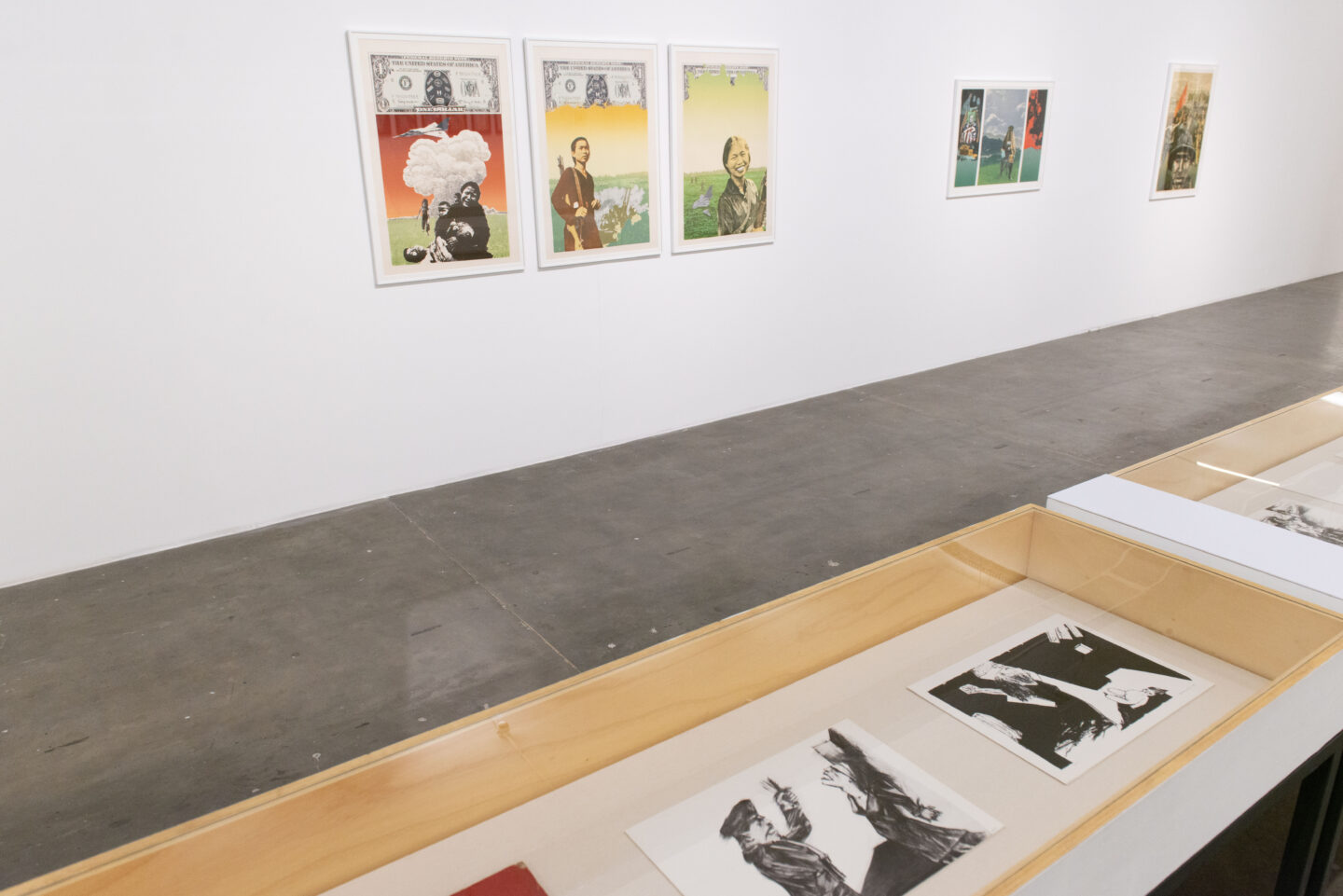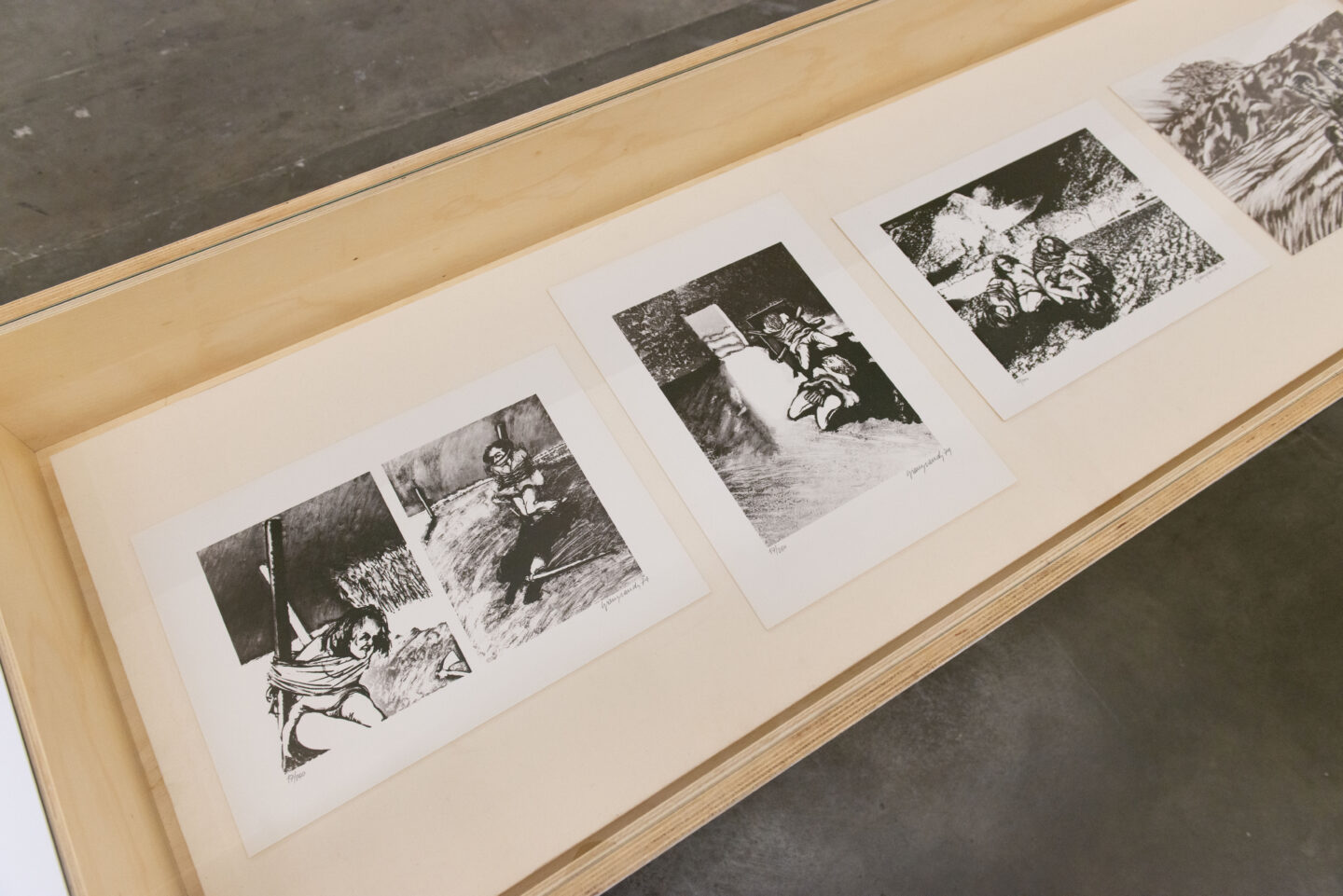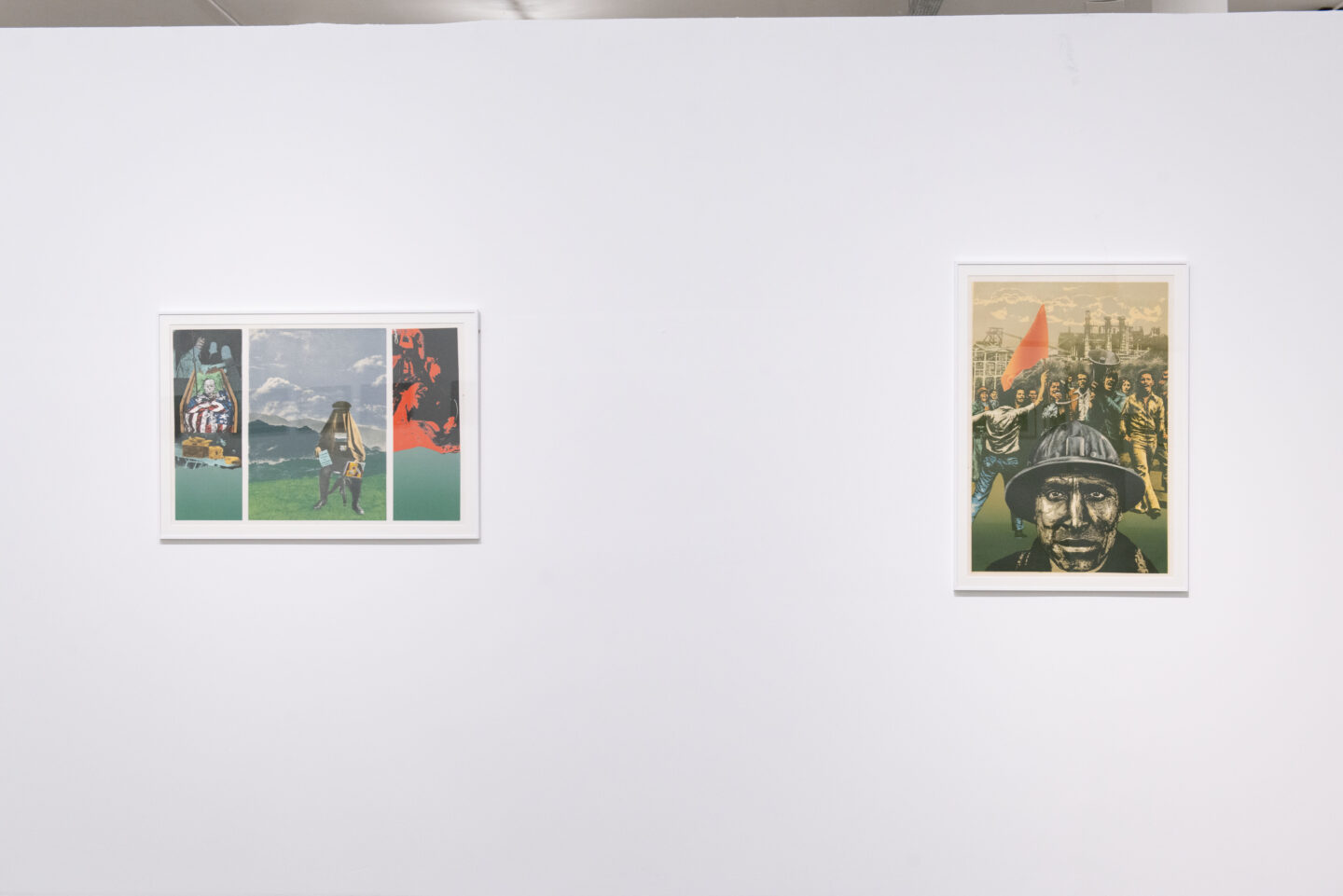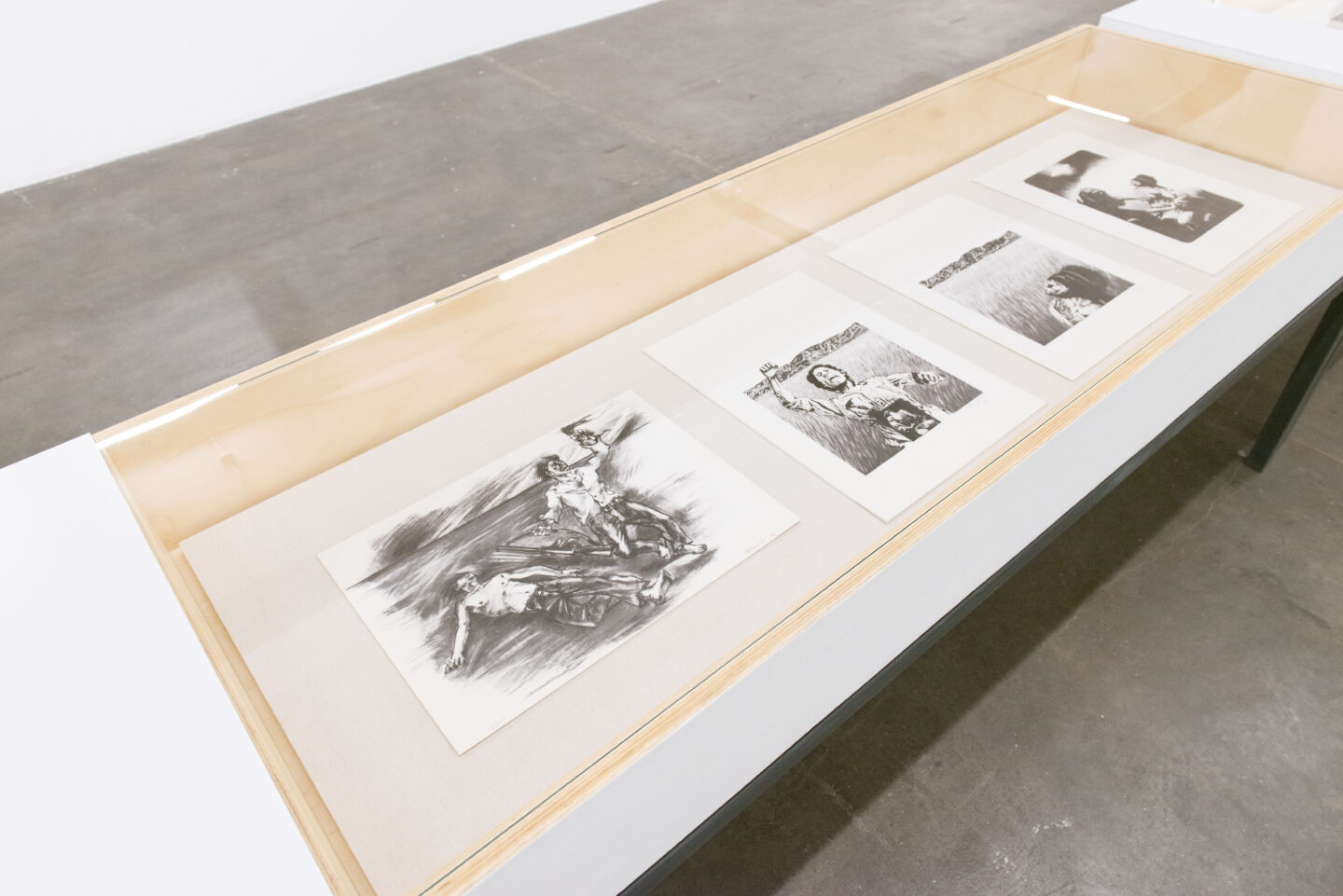
Taller 4 Rojo
At the beginning of the 1970s, Taller 4 Rojo articulated a critical visuality and carried out actions directly and supporting social movements under the National Front governments. This Liberal and Conservative coalition resulted in one of the most authoritarian periods in Colombia, with open violation of human rights, as well as consolidated the armed conflict in the country.
In this context, the Taller 4 Rojo founded a popular school and carried out field work linking up with peasant and Indigenous communities, trade unions, and marginalized urban sectors, documenting their experiences. These records, together with images collected from the press, were the testimonial substance that they transfigured through operations taken from the graphics and the Latin American cinema of the time, such as montage, the production of series and sequences, the work with patterns and high contrast.
The visual grammar of Taller 4 Rojo wasn’t the result of an analytical distance, but was elaborated from the bodily experience of having walked with the communities that were soon brought into its images. Posters such as A la huelga 100 a la huelga 1000 [100 to the Strike 1000 to the Strike] (1978) were made along several years of collaboration with independent trade unionism. The Testimonios [Testimonies] folder was an early evidence of the torture practiced by the military forces amidst the persecution of dissident political movements throughout the country. The engravings show wounded and bound bodies, blindfolded or screaming in the middle of open and inhabited landscapes. In the trilogy América II, montage and photo-serigraphy take over the tortured body, rewriting it in a more complex plot, which seems to point to the theological-political nature of the pacts of power as historical continuity.
The emblematic photo serigraph trilogy Agresión del imperialismo a los pueblos, A la agresión del imperialismo, guerra popular and Vietnam nos señala el camino [Imperialism’s Aggression Against Peoples, to Imperialism’s Aggression: People’s War, Vietnam Shows Us the Way] was made in 1971–72 in solidarity with the popular resistance in Vietnam, but also with other processes of anti-imperialist struggle in Latin America and Africa.
What happens to us today, forty years later, when we see the sequence of the disintegrating dollar note and the war plane turned into pieces in a pasture? For a moment, these images seem to anticipate the moment when war and money change form, disintegrate to become a molecule and mutate, paving the way for the financing and technologization of the massacre. But this turning point is also a point of interruption to the totalizing impulses of the history of capital. Between the three images, it is also possible to retain the movement of the body of a peasant woman, which takes on different tonalities, gaining space and proximity, showing this other time of the bodies that don’t take their feet off the ground and regenerate themselves among the ruins left behind by commodities and necropower.
fernanda carvajal
translated from Spanish by ana laura borro.
Taller 4 Rojo (Colombia, 1970-1978) was an interdisciplinary collective that used art to support social struggles of trade unions, peasants, and Indigenous communities in an authoritarian political context. In its various phases, the collective was formed by Diego Arango, Nirma Zárate, Jorge Mora, Umberto Giangrandi, Carlos Granada, and Fabio Rodríguez – all students or professors at the Universidad Nacional de Colombia. Its members participated in the 34th Venice Biennale, salons, and graphic events in Puerto Rico, Havana, Bogotá, and Cali, among others. Their works, such as posters created through photoserigraphy, are part of collections such as the Museo de Arte de la Universidad Nacional de Colombia (Bogotá) and the Museo Reina Sofía (Madrid, Spain).
- Vista de obras de Taller 4 Rojo durante a 35ª Bienal de São Paulo – coreografias do impossível © Levi Fanan / Fundação Bienal de São Paulo
- Vista de obra de Taller 4 Rojo durante a 35ª Bienal de São Paulo – coreografias do impossível © Levi Fanan / Fundação Bienal de São Paulo
- Vista de obras de Taller 4 Rojo durante a 35ª Bienal de São Paulo – coreografias do impossível © Levi Fanan / Fundação Bienal de São Paulo
- Vista de obras de Taller 4 Rojo durante a 35ª Bienal de São Paulo – coreografias do impossível © Levi Fanan / Fundação Bienal de São Paulo
- Vista de obras de Taller 4 Rojo durante a 35ª Bienal de São Paulo – coreografias do impossível © Levi Fanan / Fundação Bienal de São Paulo
- Vista de obras de Taller 4 Rojo durante a 35ª Bienal de São Paulo – coreografias do impossível © Levi Fanan / Fundação Bienal de São Paulo
- Vista de obras de Taller 4 Rojo durante a 35ª Bienal de São Paulo – coreografias do impossível © Levi Fanan / Fundação Bienal de São Paulo

 Português
Português





